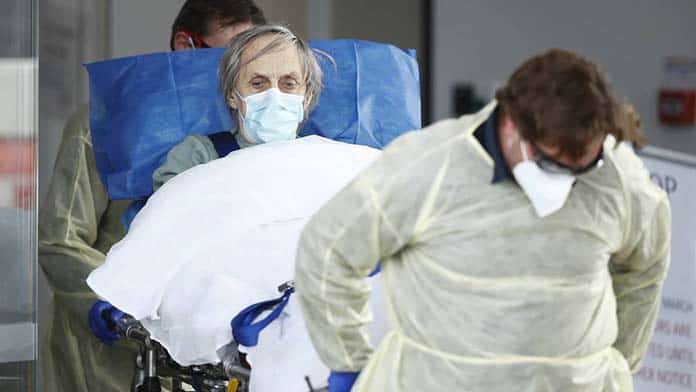Amid the wider chaos over the Omicron wave of the virus, the government failure in aged care stands out as particularly deadly. There have been criminal delays delivering booster shots to some of the country’s most vulnerable people.
As in previous COVID waves, older Australians have been at greatest risk of dying. Around 80 per cent of the deaths since December have been in people over 70. And almost a third of those who’ve died in the Omicron wave have been in aged care—over 680 people.
Disgustingly, Health Minister Greg Hunt dismissed the deaths, repeatedly claiming that most of these people were in palliative care, and going to die anyway. Aged Care Minister Richard Colbeck took time out to watch the cricket, after telling the Senate COVID-19 committee he was too busy dealing with Omicron to attend.
Aged care residents should have been among the first people to receive booster shots. The rollout in aged care started in early November. But instead of speeding up when Omicron cases hit 1000 a day in NSW in mid-December, the pace of vaccination slowed down.
The government now claims that vaccination teams have visited all aged care homes. Yet it’s also admitted that at least 35,000 people, around 20 per cent of residents, have still not received them.
Overwhelmingly, that’s not because people refused them. Most were not eligible for a booster when vaccine teams visited, because it hadn’t been long enough since their second dose. Until 4 January boosters could not be delivered until five months after a second jab.
In other words, booster teams are so short staffed that they’ve been unable to return to aged care homes for a second visit. This is further evidence of the abysmal failure on vaccination.
Paul Sadler, chief executive of Aged & Community Services Australia, has confirmed this, telling The Guardian that the slowdown was, “Because of the staffing shortages, both within aged care and among vaccine clinic providers… we started to lose staff pretty heavily from mid-December”.
The Omicron wave has caused staff shortages across the economy. But the problems in aged care have been compounded by the reliance on private providers to run the vaccinations.
These private contractors have far less staff than the public health system, making it harder to prioritise vaccination in aged care and replace staff in isolation or sick with COVID. And private companies run on the basis of profit, not doing whatever it takes to save lives.
Nor have any lessons from the initial vaccine rollout been learned. So far just 40 per cent of aged care staff have had boosters—with vaccine teams again not paid to vaccinate staff at the same time as residents. Boosting aged care staff would provide at least some extra protection against staff catching and bringing in the virus.
There are also shortages of rapid tests and even PPE, with Sean Rooney from Leading Age Services Australia saying many homes were in “dire need” of both.
The nurses’ union found a quarter of aged care workers were not being provided with rapid tests at work in a survey of members in late January. The government has failed to provide anywhere near the number of tests needed.
Carolyn Smith from the United Workers Union said that staff, “saw what happened with the first waves of COVID-19, it’s like Groundhog Day, we don’t have enough PPE, we don’t have an alternative staffing plan”.
Cuts and privatisation
Half of all aged care homes around the country are now battling outbreaks. As a result the rampant understaffing, miserable pay and neglect in the sector are again on display. Homes have responded to outbreaks by locking down residents in their rooms for as long as three weeks at a time, producing misery and isolation from family and friends.
According to The Guardian a quarter of all shifts are currently going unfilled due to lack of staff. The use of 1700 army personnel will be nowhere near enough to plug the gaps.
Scott Morrison’s announcement of two $400 staff bonus payments is simply another insulting media stunt. This will do nothing to fix the problems that are driving staff out of the sector and producing abuse of the elderly.
The crisis in aged care is not new. Yet nothing has been done to fix the horrifying conditions exposed in last year’s Royal Commission and in countless scandals.
Care workers and nurses are paid 10-15 per cent less than those in healthcare. Low pay, casualisation and stressful conditions result in the turnover of between a quarter and a third of the workforce every year.
The Health Services Union and the nurses’ union are currently arguing for a 25 per cent pay increase in a case before the Fair Work Commission. Labor leader Anthony Albanese says the government should be making a submission supporting an increase in wages—without committing to how much it should be or backing the union claim.
Labor needs to commit to the kind of pay increase that would make a real difference. But we also need to reverse the years of funding cuts and privatisation of aged care that are responsible for the crisis. That’s going to require a much broader union fight—with action well beyond the Fair Work Commission.
By James Supple






